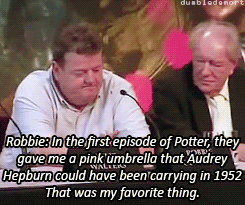Harvard Has A Pigment Library That Stores Old Pigment Sources, Like The Ground Shells Of Now-extinct

Harvard has a pigment library that stores old pigment sources, like the ground shells of now-extinct insects, poisonous metals, and wrappings from Egyptian mummies, to preserve the origins of the world’s rarest colors.

A few centuries ago, finding a specific color might have meant trekking across the globe to a mineral deposit in the middle of Afghanistan. “Every pigment has its own story,” Narayan Khandekar, the caretaker of the pigment collection, told Fastcodesign. He also shared the stories of some of the most interesting pigments in the collection.

Mummy Brown
“People would harvest mummies from Egypt and then extract the brown resin material that was on the wrappings around the bodies and turn that into a pigment. It’s a very bizarre kind of pigment, I’ve got to say, but it was very popular in the 18th and 19th centuries.”

Cadmium Yellow
“Cadmium yellow was introduced in the mid 19th century. It’s a bright yellow that many impressionists used. Cadmium is a heavy metal, very toxic. In the early 20th century, cadmium red was introduced. You find these pigments used in industrial processes. Up until the 1970s, Lego bricks had cadmium pigment in them.”
Annatto “The lipstick plant—a small tree, Bixa orellana, native to Central and South America—produces annatto, a natural orange dye. Seeds from the plant are contained in a pod surrounded with a bright red pulp. Currently, annatto is used to color butter, cheese, and cosmetics.”

Lapis Lazuli “People would mine it in Afghanistan, ship it across Europe, and it was more expensive than gold so it would have its own budget line on a commission.”
Dragon’s Blood “It has a great name, but it’s not from dragons. [The bright red pigment] is from the rattan palm.”

Cochineal “This red dye comes from squashed beetles, and it’s used in cosmetics and food.”
Emerald Green “This is made from copper acetoarsenite. We had a Van Gogh with a bright green background that was identified as emerald green. Pigments used for artists’ purposes can find their way into use in other areas as well. Emerald green was used as an insecticide, and you often see it on older wood that would be put into the ground, like railroad ties.”

Source
More Posts from Philosophical-amoeba and Others
The Okinawan Language
Anybody who has studied Japanese and Linguistics will know that Japanese is a part of the Japonic language family. For many years it was thought that Japanese was a language isolate, unrelated to any other language (Although there is some debate as to whether or not Japanese and Korean are related). Today, most linguists are in agreement that Japanese is not an isolate. The Japonic languages are split into two groups: Japanese (日本語) and its dialects, which range from standard Eastern Japanese (東日本方言) to the various dialects found on Kyūshū (九州日本方言), which are, different, to say the least. The Ryukyuan Languages (琉球語派). Which are further subdivided into Northern and Southern Ryukyuan languages. Okinawan is classified as a Northern Ryukyuan Languages. There are a total of 6 Ryukyuan languages, each with its own dialects. The Ryukyuan languages exist on a continuum, somebody who speaks Okinawan will have a more difficult time understanding the Yonaguni Language, which is spoken on Japan’s southernmost populated island. Japanese and Okinawan (I am using the Naha dialect of Okinawan because it was the standard language of the Ryukyu Kingdom), are not intelligible. Calling Okinawan a dialect of Japanese is akin to calling Dutch a dialect of English. It is demonstrably false. Furthermore, there is an actual Okinawan dialect of Japanese, which borrows elements from the Okinawan language and infuses it with Japanese. So, where did the Ryukyuan languages come from? This is a question that goes hand in hand with theories about where Ryukyuan people come from. George Kerr, author of Okinawan: The History of an Island People (An old book, but necessary read if you’re interested in Okinawa), theorised that Ryukyuans and Japanese split from the same population, with one group going east to Japan from Korea, whilst the other traveled south to the Ryukyu Islands. “In the language of the Okinawan country people today the north is referred to as nishi, which Iha Fuyu (An Okinawn scholar) derives from inishi (’the past’ or ‘behind’), whereas the Japanese speak of the west as nishi. Iha suggests that in both instances there is preserved an immemorial sense of the direction from which migration took place into the sea islands.” (For those curious, the Okinawan word for ‘west’ is いり [iri]). But, it must be stated that there are multiple theories as to where Ryukyuan and Japanese people came from, some say South-East Asia, some say North Asia, via Korea, some say that it is a mixture of the two. However, this post is solely about language, and whilst the relation between nishi in both languages is intriguing, it is hardly conclusive. With that said, the notion that Proto-Japonic was spoken by migrants from southern Korea is somewhat supported by a number of toponyms that may be of Gaya origin (Or of earlier, unattested origins). However, it also must be said, that such links were used to justify Japanese imperialism in Korea. Yeah, when it comes to Japan and Korea, and their origins, it’s a minefield. What we do know is that a Proto-Japonic language was spoken around Kyūshū, and that it gradually spread throughout Japan and the Ryukyu Islands. The question of when this happened is debatable. Some scholars say between the 2nd and 6th century, others say between the 8th and 9th centuries. The crucial issue here, is the period in which proto-Ryukyuan separated from mainland Japanese. “The crucial issue here is that the period during which the proto-Ryukyuan separated(in terms of historical linguistics) from other Japonic languages do not necessarily coincide with the period during which the proto-Ryukyuan speakers actually settled on the Ryūkyū Islands.That is, it is possible that the proto-Ryukyuan was spoken on south Kyūshū for some time and the proto-Ryukyuan speakers then moved southward to arrive eventually in the Ryūkyū Islands.” This is a theory supported by Iha Fuyu who claimed that the first settlers on Amami were fishermen from Kyūshū. This opens up two possibilities, the first is that ‘Proto-Ryukyuan’ split from ‘Proto-Japonic’, the other is that it split from ‘Old-Japanese’. As we’ll see further, Okinawan actually shares many features with Old Japanese, although these features may have existed before Old-Japanese was spoken. So, what does Okinawan look like? Well, to speakers of Japanese it is recognisable in a few ways. The sentence structure is essentially the same, with a focus on particles, pitch accent, and a subject-object-verb word order. Like Old Japanese, there is a distinction between the terminal form ( 終止形 ) and the attributive form ( 連体形 ). Okinawan also maintains the nominative function of nu ぬ (Japanese: no の). It also retains the sounds ‘wi’ ‘we’ and ‘wo’, which don’t exist in Japanese anymore. Other sounds that don’t exist in Japanese include ‘fa’ ‘fe’ ‘fi’ ‘tu’ and ‘ti’. Some very basic words include: はいさい (Hello, still used in Okinawan Japanese) にふぇーでーびる (Thank you) うちなー (Okinawa) 沖縄口 (Uchinaa-guchi is the word for Okinawan) めんそーれー (Welcome) やまとぅ (Japan, a cognate of やまと, the poetic name for ‘Japan’) Lots of Okinawan can be translated into Japanese word for word. For example, a simple sentence, “Let’s go by bus” バスで行こう (I know, I’m being a little informal haha!) バスっし行ちゃびら (Basu sshi ichabira). As you can see, both sentences are structured the same way. Both have the same loanword for ‘bus’, and both have a particle used to indicate the means by which something is achieved, ‘で’ in Japanese, is ‘っし’ in Okinawan. Another example sentence, “My Japanese isn’t as good as his” 彼より日本語が上手ではない (Kare yori nihon-go ga jouzu dewanai). 彼やか大和口ぬ上手やあらん (Ari yaka yamatu-guchi nu jooji yaaran). Again, they are structured the same way (One important thing to remember about Okinawan romanisation is that long vowels are represented with ‘oo’ ‘aa’ etc. ‘oo’ is pronounced the same as ‘ou’). Of course, this doesn’t work all of the time, if you want to say, “I wrote the letter in Okinawan” 沖縄語で手紙を書いた (Okinawa-go de tegami wo kaita). 沖縄口さーに手紙書ちゃん (Uchinaa-guchi saani tigami kachan). For one, さーに is an alternate version of っし, but, that isn’t the only thing. Okinawan doesn’t have a direct object particle (を in Japanese). In older literary works it was ゆ, but it no longer used in casual speech. Introducing yourself in Okinawan is interesting for a few reasons as well. Let’s say you were introducing yourself to a group. In Japanese you’d say みんなさこんにちは私はフィリクスです (Minna-san konnichiwa watashi ha Felixdesu) ぐすよー我んねーフィリクスでぃいちょいびーん (Gusuyoo wan’nee Felix di ichoibiin). Okinawan has a single word for saying ‘hello’ to a group. It also showcases the topic marker for names and other proper nouns. In Japanese there is only 1, は but Okinawan has 5! や, あー, えー, おー, のー! So, how do you know which to use? Well, there is a rule, typically the particle fuses with short vowels, a → aa, i → ee, u → oo, e → ee, o → oo, n → noo. Of course, the Okinawan pronoun 我ん, is a terrible example, because it is irregular, becoming 我んねー instead of 我んのー or 我んや. Yes. Like Japanese, there are numerous irregularities to pull your hair out over! I hope that this has been interesting for those who have bothered to go through the entire thing. It is important to discuss these languages because most Ryukyuan languages are either ‘definitely’ or ‘critically’ endangered. Mostly due to Japanese assimilation policies from the Meiji period onward, and World War 2. The people of Okinawa are a separate ethnic group, with their own culture, history, poems, songs, dances and languages. It would be a shame to lose something that helps to define a group of people like language does. I may or may not look in the Kyūshū dialects of Japanese next time. I’unno, I just find them interesting.
I read once that shortly before The Merchant Of Venice was written, Queen Elizabeths doctor (who was Jewish) tried to poison her; is that true?
Sort of.
There was a doctor accused of trying to poison Queen Elizabeth. His name was Roderigo Lopez. He was Jewish and of Spanish descent and was fairly well off. He was accused of trying to poison her and conspiring against her with Spanish officials. I believe he is the only English physician to have been executed.
HOWEVER, we don’t know if he actually wanted to poison her. There was no attempt I believe, just accusations. He stated before he died that he “loved the Queen as much as he loved Jesus Christ” which can (and was) be interpreted in many ways. Some people think the Queen thought he was innocent because she took a long time to sign his death warrant. The character may have been the inspiration for Shylock in the Merchant of Venice, since they are both considered villains and evil because they’re Jewish but no one is 100% sure. Based on what I’ve heard, I don’t think he actually wanted to poison the queen and was probably just a target of antisemitism and maybe anti Spanish sentiment but who knows.
Thanks for bringing this up! I’m sure people would love to read about it. I’ve put the Wikipedia article below:
https://en.wikipedia.org/wiki/Roderigo_Lopez#Royal_physician
-Admin @thesunofyork








What was your favorite prop or costume from the “Harry Potter” films?










My boyfriend, @inlove-with-a-spine, is very uninformed about Southeast Asian fruits (he only knows durian) which inspired me to find these online.
I’m pretty sure the names are different in other Southeast Asian countries, though.
From left to right (in Indonesian):
Duku
Jambu monyet
Jeruk
Lengkeng
Kedondong
Manggis
Rambutan
Nangka
Salak
Sawo

How viruses infect bacteria: a tale of a tail
To infect bacteria, most bacteriophages employ a ‘tail’ that stabs and pierces the bacterium’s membrane to allow the virus’s genetic material to pass through. The most sophisticated tails consist of a contractile sheath surrounding a tube akin to a stretched coil spring at the nanoscale. When the virus attaches to the bacterial surface, the sheath contracts and drives the tube through it. All this is controlled by a million-atom baseplate structure at the end of the tail. EPFL scientists have now shown, in atomic detail, how the baseplate coordinates the virus’s attachment to a bacterium with the contraction of the tail’s sheath. The breakthrough has made the cover of Nature, and has important implications for science and medicine.
Nicholas M. I. Taylor, Nikolai S. Prokhorov, Ricardo C. Guerrero-Ferreira, Mikhail M. Shneider, Christopher Browning, Kenneth N. Goldie, Henning Stahlberg, Petr G. Leiman. Structure of the T4 baseplate and its function in triggering sheath contraction. Nature, 2016; 533 (7603): 346 DOI: 10.1038/nature17971
Bacteriophages are viruses that infect bacteria. Using state-of-the-art tools, EPFL scientists have described a million-atom “tail” that bacteriophages use to breach bacterial surfaces. The breakthrough has major implications for science and medicine, as bacteriophages are widely used in research.


What the heck is ‘Johnston’s Fluid Beef’? According to this Victorian age flyer in the Canada Medical and Surgical Journal of April 1883, it is “the most perfect food for invalids ever introduced, concentrated preparation for nutritious beef tea or soup, specially recommended by the Medical Faculty.” But the directions for use on page 4 may be a recipe for botulism: “Add a small teaspoon to a cup of boiling water and season to taste; or as a sandwich paste it may be used on toast, with or without butter. The can may remain open for weeks without detriment to the contents.”
The story of ‘Johnston’s Fluid Beef’ began in 1870 in the Franco-Prussian War, when Napoleon III ordered a million cans of beef to feed troops. John Lawson Johnston, a Scot living in Montreal, had the task of providing it. Transportation and storage were problematic, so Johnston created a product known as Johnston’s Fluid Beef, later called Bovril, to meet the need. By 1888, Johnston’s Fluid Beef became a British staple sold in 3,000 U.K. public houses, grocers and dispensing chemists, and remains so today. A major downturn in sales occurred in 2004 when the company changed its formula to make Bovril vegetarian. The Guardian reported in 2007: “Rather than any new-found vegetarian gusto, the move [by Bovril] to yeast extract in 2004 was largely triggered by concerns about beef consumption and BSE [bovine spongiform encephalopathy], which affected Bovril’s export market.” But by 2006, the beef was back in Bovril and the company survives. Modern directions for use are recommended.
Molecule of the Day: Chloroform


Chloroform (CHCl3) is a colourless, dense liquid that is immiscible with water at room temperature and pressure. Popularised by movies and dramas, it is often cited as an incapacitating agent in popular culture.
Chloroform was used as a general anaesthetic due to its ability to depress the central nervous system, a property that was discovered in 1842. This produced a medically-induced coma, allowing surgeons to operate on patients without them feeling any pain.

However, chloroform was found to be associated with many side effects, such as vomiting, nausea, jaundice, depression of the respiratory system, liver necrosis and tumour formation, and its use was gradually superseded in the early 20th century by other anaesthetics and sedatives such as diethyl ether and hexobarbital respectively.

While chloroform has been implicated in several criminal cases, its use as an incapacitating agent is largely restricted to fiction; the usage of a chloroform-soaked fabric to knock a person out would take at least 5 minutes.
Chloroform is metabolised in the liver to form phosgene, which can react with DNA and proteins. Additionally, phosgene is hydrolysed to produced hydrochloric acid. These are believed to cause chloroform’s nephrotoxicity.
Chloroform is often used as a reagent to produce dichlorocarbene in situ via its reaction with a base like sodium tert-butoxide. This is a useful precursor to many derivatives. For example, the dichlorocarbene can be reacted with alkenes to form cyclopropanes, which can be difficult to synthesise otherwise.

Chloroform is industrially synthesised by the free radical chlorination of methane:
CH4 + 3 Cl2 –> CHCl3 + 3 HCl
It can also be synthesised by the reaction of acetone with sodium hypochlorite in bleach by successive aldol-like reactions:











The Roly Poly Pudding - Beatrix Potter
First Edition - Second Printing 1908
[5500 copies Dec. 1908]
Computer Science/Engineering Masterpost
Online lectures:
Discrete Mathematics (x) (x) (x) (x) (x)
Data Structures (x) (x) (x) (x) (and Object Oriented Programming (x) )
Software Engineering (x)
Database (x)
Operating Systems (x) (x) (x) (x) (x) (x) (x)
Structure and Interpretation of Computer Programs (x)
Computer Architecture (x)
Programming (x) (x) (x) (x) (x) (x) (x)
Linear Algebra (x) (x) (x)
Artificial Intelligence (x) (x)
Algorithms (x)
Calculus (x) (x) (x)
Tutorials (programming) and other online resources:
Programming languages online tutorials and Computer Science/Engineering online courses
Java tutorial
Java, C, C++ tutorials
Memory Management in C
Pointers in C/C++
Algorithms
Genetic Algorithms
Websites for learning and tools:
Stack Overflow
Khan Academy
Mathway
Recommended books:
Computer organization and design: the hardware/software interface. David A.Patterson & John L. Hennessy.
Artificial intelligence: a modern approac. Stuart J. Russel & Peter Norvig.
Database systems: the complete book. Hector Garcia-Molina, Jeffrey D. Ullman, Jennifer Widom.
Algorithms: a functional programming approach. Fethi Rabbi & Guy Lapalme.
Data Structures & Algorithms in Java: Michael T. Goodrich & Roberto Tamassia.
The C programming language: Kernighan, D. & Ritchie.
Operating System Concepts: Avi Silberschatz, Peter Baer Galvin, Greg Gagne.
Study Tips:
How to Study
Exam Tips for Computer Science
Top 10 Tips For Computer Science Students
Study Skills: Ace Your Computing Science Courses
How to study for Computer Science exams
How to be a successful Computer Science student
Writing in Sciences, Mathematics and Engineering:
Writing a Technical Report
Writing in the Sciences (Stanford online course)
Writing in Mathematics, Statistics and Computer Science Courses
The Icelandic Language still uses the letters Þ and Ð, which used to be in the English alphabet too but which fell into disuse and were eventually left out altogether. Their pronunciation is the sound made by the “th” in “this” and “that” respectively.
Incidentally, the Þ was not included in early English printing press types. As a substitute they used y, which looks somewhat similar. Thus was the popular misconception born that English people used to say “ye” as in “ye old shoppe.”
-
 allisteravarice liked this · 2 weeks ago
allisteravarice liked this · 2 weeks ago -
 orangedodge liked this · 3 weeks ago
orangedodge liked this · 3 weeks ago -
 heckcareoxytwit reblogged this · 3 weeks ago
heckcareoxytwit reblogged this · 3 weeks ago -
 lillytalons liked this · 1 month ago
lillytalons liked this · 1 month ago -
 dejaaaavuu liked this · 1 month ago
dejaaaavuu liked this · 1 month ago -
 geeksthetics reblogged this · 1 month ago
geeksthetics reblogged this · 1 month ago -
 fblckt liked this · 1 month ago
fblckt liked this · 1 month ago -
 colour-is-its-own-reward reblogged this · 2 months ago
colour-is-its-own-reward reblogged this · 2 months ago -
 justforfollowingpeople liked this · 7 months ago
justforfollowingpeople liked this · 7 months ago -
 kiki-miserychic reblogged this · 7 months ago
kiki-miserychic reblogged this · 7 months ago -
 thelibrarianxhes reblogged this · 8 months ago
thelibrarianxhes reblogged this · 8 months ago -
 graveofcalaxes liked this · 8 months ago
graveofcalaxes liked this · 8 months ago -
 trashpandaanarchy reblogged this · 10 months ago
trashpandaanarchy reblogged this · 10 months ago -
 3fireworks liked this · 10 months ago
3fireworks liked this · 10 months ago -
 blood-sugar-spice-magic reblogged this · 11 months ago
blood-sugar-spice-magic reblogged this · 11 months ago -
 toxiicwcste reblogged this · 1 year ago
toxiicwcste reblogged this · 1 year ago -
 rzc11 reblogged this · 1 year ago
rzc11 reblogged this · 1 year ago -
 rzc11 liked this · 1 year ago
rzc11 liked this · 1 year ago -
 pixxxelhotsauce reblogged this · 1 year ago
pixxxelhotsauce reblogged this · 1 year ago -
 pixelhotsauce liked this · 1 year ago
pixelhotsauce liked this · 1 year ago -
 xxcrelisexx liked this · 1 year ago
xxcrelisexx liked this · 1 year ago -
 heckcareoxytwit reblogged this · 1 year ago
heckcareoxytwit reblogged this · 1 year ago -
 smexylaah liked this · 1 year ago
smexylaah liked this · 1 year ago -
 tehjleck reblogged this · 1 year ago
tehjleck reblogged this · 1 year ago -
 smalltittypunkgf liked this · 1 year ago
smalltittypunkgf liked this · 1 year ago -
 xidipsum-art liked this · 1 year ago
xidipsum-art liked this · 1 year ago -
 jeixart liked this · 1 year ago
jeixart liked this · 1 year ago -
 iftadwascool reblogged this · 1 year ago
iftadwascool reblogged this · 1 year ago -
 neomiel liked this · 1 year ago
neomiel liked this · 1 year ago -
 vanwolffen reblogged this · 1 year ago
vanwolffen reblogged this · 1 year ago -
 vanwolffen liked this · 1 year ago
vanwolffen liked this · 1 year ago -
 hypnoticicedragon reblogged this · 1 year ago
hypnoticicedragon reblogged this · 1 year ago -
 leeveemealone reblogged this · 1 year ago
leeveemealone reblogged this · 1 year ago -
 leeveemealone liked this · 1 year ago
leeveemealone liked this · 1 year ago -
 bbstarrb liked this · 1 year ago
bbstarrb liked this · 1 year ago -
 iamthebatfan89 liked this · 1 year ago
iamthebatfan89 liked this · 1 year ago -
 gunhistory87 reblogged this · 1 year ago
gunhistory87 reblogged this · 1 year ago -
 funky-insanitear liked this · 1 year ago
funky-insanitear liked this · 1 year ago -
 crixpycromch liked this · 1 year ago
crixpycromch liked this · 1 year ago -
 plaidinsanity liked this · 1 year ago
plaidinsanity liked this · 1 year ago -
 norageonlypancakes reblogged this · 1 year ago
norageonlypancakes reblogged this · 1 year ago -
 graduallywatermellon reblogged this · 1 year ago
graduallywatermellon reblogged this · 1 year ago -
 doctorslippery reblogged this · 1 year ago
doctorslippery reblogged this · 1 year ago -
 dewo-art liked this · 1 year ago
dewo-art liked this · 1 year ago
A reblog of nerdy and quirky stuff that pique my interest.
291 posts